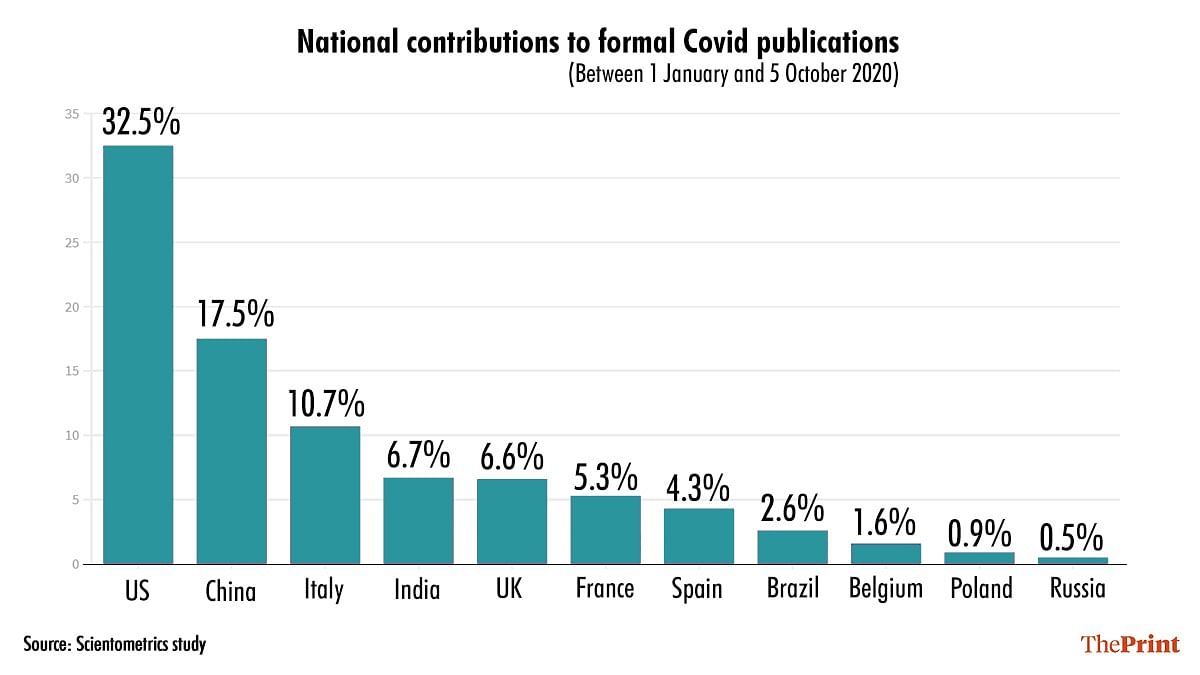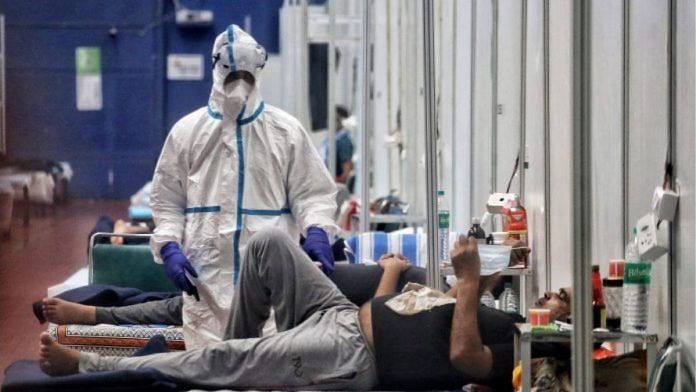New Delhi: India has recorded the second highest number of coronavirus cases in the world, but despite the high rate of infections, it accounts for only 6.7 per cent of global scientific research on Covid-19, a new study has found.
A total of 87,515 publications were pushed out until 5 October 2020, of which the US contributed the most at 32.5 per cent articles (17,129 articles), said the study published in the Scientometrics Journal earlier this month.
The US was followed by China and Italy, with India and the UK rounding up the top five.

The study was conducted by researchers at John Glenn College of Public Affairs at Ohio State University in the US, in collaboration with researchers from Zhejiang University in China.
“The most affected nations tend to produce the greatest number of coronavirus articles, with output closely coupled to the rate of infection,” the study said, even as it noted that countries like India recorded a higher rate of publications in the later stage of the pandemic.
According to the study, there was a great “boom” in the number of Covid publications.
It divided the publications in three periods: Period 1 — 1 January to 8 April 2020 (4,875 articles); Period 2 — 9 April to 12 July (39,138); and Period 3 — 13 July to 5 October (43,502).
The data was focused on nine of the 10 most affected countries during the research period — the US, India, France, Brazil, UK, Spain, Russia, Belgium and Poland — and China, since it was the “first economy that suffered from the pandemic”.
Also read: Why you should stop worrying about extremely unlikely Covid risks
Higher the infections, higher the research publications
According to the study, in Period 1, India accounted for 2.9 per cent articles published on Covid-19. This rose to 6.7 per cent in Period 2 and remained steady at 6.8 per cent during Period 3.
India’s total contribution to scientific research in this time frame was 6.7 per cent (13,062 articles).
The study noted that countries such as India, Brazil, France, Spain, Poland and Belgium “gained greater visibility in later periods of the pandemic”.
China accounted for the most number of articles published in Period 1 at 47.4 per cent. It witnessed a significant drop in contributions in Period 2 at 17.7 per cent, which fell further to 16.1 per cent in Period 3.
Noting how Beijing’s contributions to research dropped as the pandemic progressed, the study said this could be due to “China’s reduced rate of publication on the topic, and perhaps due to political obstacles, or a combination of these factors”.
It traced a trend wherein the publication shares of each country corresponded with the number of infections. For instance, there were fewer confirmed cases in China during Period 2. This corresponded with the country witnessing a drop in the number of research articles in that stage.
“India and Brazil reported rapid growth in the number of Covid-19 cases in Period 2 and 3, and also showed a great boom in global shares of publications since Period 2,” the study noted.
The study also observed that the rate of international collaboration among articles continued to fall through the pandemic.
It said this could be due to “physical” or “political” obstacles, including travel bans across the world. “Political obstacles to collaboration may be more subtle than physical ones, but they may also be influencing the rate of activity and connection,” the study added.
Also read: Moderna’s new version of Covid vaccine to target South Africa strain sent for clinical study







Don’t say Just 6.7 percent they didn’t look at the impact factors. This is naive comparision. Last year journals are flooded with papers on corona virus and most of them do not make any impact in understanding the virus or make vaccine for it.
These are the matters that shouldn’t be viewed immediately after event since only in long-term like another 2 to 3 years we can figure out impact made by papers on understanding of the virus